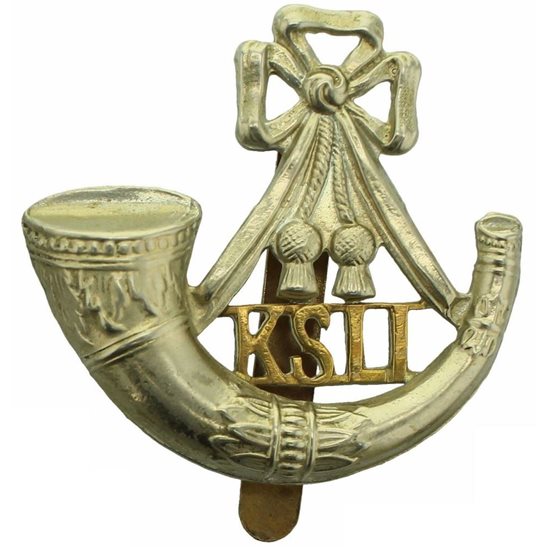Personal Details
Born: 1 November 1878 in Whitchurch, Shropshire and baptised 31 January 1879 at St Alkmund`s Parish Church, Whitchurch. He was also known as Thomas Harry Croxon.
Family: He was the eldest of eleven children born to Samuel Spencer (also known as Croxon), a gas stoker and his wife Betsy. He married Louisa Rogers on 30 November 1909 at St Alkmund`s Parish Church, Whitchurch. The couple had two children, Elsie May, born in 1912 and Thomas Harry, born in 1919. Sadly Louisa died in 1928 and Thomas married Fanny Humphreys in 1931 in Oswestry, Shropshire.
Residence: In 1881 his family were living at 10 Yardington, Whitchurch but by 1891 they had moved to 37 Newtown, Whitchurch. This was the address he gave in 1901 when he enlisted in the Shropshire Light Infantry. At the time of his daughter`s baptism in 1912 the family were living at 18 Sherrymill Hill, Whitchurch. On his pension index card his address was 15 Nant-y-Caws, Morda, Oswestry, Shropshire. In 1939 his home was 3 Gronwen, Oswestry.
Employment: In 1891 he was a bricklayer`s labourer, but by the time of his marriage in 1909 he was a gas stoker. On the 1939 Register his occupation was given as a contractor`s labourer.
Died: In 1950 in Oswestry, Shropshire, aged 71.
Military Details
Regiment: King’s Shropshire Light Infantry
Rank: Private
Service Number: 6693
Date of Enlistment: 16 July 1901, transferred to the Army Reserve in 1904 and was re- engaged on 5 August 1914.
Date of Discharge: 22 March 1916
Reason for Discharge: No longer physically fit for war service.
Other Information: His brother Frederick (Croxon) also served in WW1.
Thomas was awarded the Campaign medals (1915 Star, British War Medal and Victory Medal) and the Silver War Badge (number 504660) on 15 October 1920

The 1914 Star (also known as 'Pip') was authorised under Special Army Order no. 350 in November 1917 and by an Admiralty Fleet Order in 1918, for award to officers and men of the British and Indian Expeditionary Forces who served in France or Belgium between 5 August and midnight of 22–23 November 1914. The former date is the day after Britain's declaration of war against the Central Powers, and the closing date marks the end of the First Battle of Ypres.
The 1914–15 Star (also known as 'Pip') was instituted in December 1918 and was awarded to officers and men of British and Imperial forces who served against the Central European Powers in any theatre of the Great War between 5 August 1914 and 31 December 1915. The period of eligibility was prior to the introduction of the Military Service Act 1916, which instituted conscription in Britain.
The British War Medal (also known as 'Squeak') was a silver or bronze medal awarded to officers and men of the British and Imperial Forces who either entered a theatre of war or entered service overseas between 5th August 1914 and 11th November 1918 inclusive. This was later extended to services in Russia, Siberia and some other areas in 1919 and 1920. Approximately 6.5 million British War Medals were issued. Approximately 6.4 million of these were the silver versions of this medal. Around 110,000 of a bronze version were issued mainly to Chinese, Maltese and Indian Labour Corps. The front (obv or obverse) of the medal depicts the head of George V. The recipient's service number, rank, name and unit was impressed on the rim.
The Allied Victory Medal (also known as 'Wilfred') was issued by each of the allies. It was decided that each of the allies should each issue their own bronze victory medal with a similar design, similar equivalent wording and identical ribbon. The British medal was designed by W. McMillan. The front depicts a winged classical figure representing victory. Approximately 5.7 million victory medals were issued. Interestingly, eligibility for this medal was more restrictive and not everyone who received the British War Medal ('Squeak') also received the Victory Medal ('Wilfred'). However, in general, all recipients of 'Wilfred' also received 'Squeak' and all recipients of The 1914 Star or The 1914/1915 Star (also known as 'Pip') also received both 'Squeak' and 'Wilfred'. The recipient's service number, rank, name and unit was impressed on the rim.

The Silver War Badge was issued in the United Kingdom and the British Empire to service personnel who had been honourably discharged due to wounds or sickness from military service in World War I. The badge, sometimes known as the "Discharge Badge", the "Wound Badge" or "Services Rendered Badge", was first issued in September 1916, along with an official certificate of entitlement.

